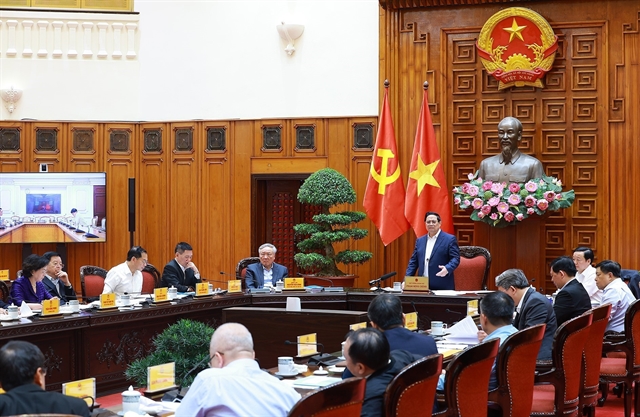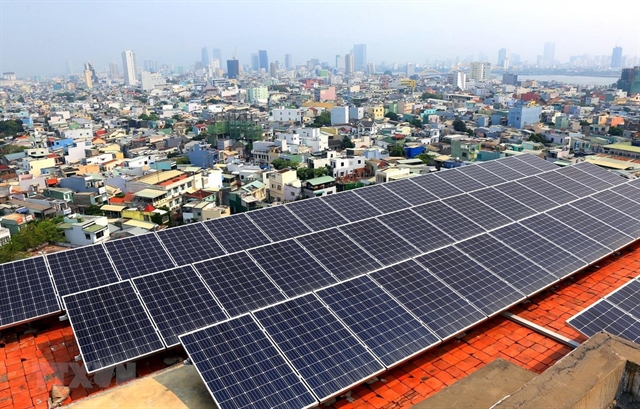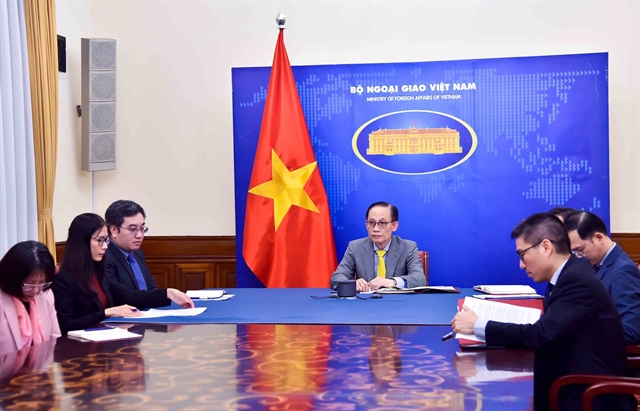 Economy
Economy


|
| Many enterprises were interested in investing in technology solutions to save energy, but the resources for doing this were limited. — VNA/VNS Photo Ngọc Hà |
Compiled by Mai Linh
HÀ NỘI — Việt Nam needs to develop policies to encourage enterprises to take action for power saving in the context that electricity shortages were forecast to persist.
Massive power outages last summer, which seriously affected production and daily life, underlined a pressing need for saving energy. A recent report by the World Bank showed that the power outages in the northern Việt Nam in May and June caused a significant economic blow of around US$1.4 billion or 0.3 per cent of the country’s GDP.
Trần Viết Nguyên, deputy head of Vietnam Electricity (EVN)’s business department, said that the northern region might continue to face power shortages in the next two years. In the context of supply shortages, electricity users played a very important role in how to ensure efficient and economical use of electricity.
Power shortages remained stressing for the northern region in the next two years as major power generation projects were behind schedule and could not go operational soon, including An Khánh, Na Dương 2 and Cẩm Phả projects with a total capacity of more than 4,200 MW, Nguyễn Anh Tuấn from Việt Nam Energy Associations said.
In a report to the Government in June, EVN said that the demand for electricity in the North increased on average 10 per cent, equivalent to 2,400-2,900 MW, per year.
Meanwhile, new power sources which were expected to be put into operation in 2024 and 2025 had a total capacity of 780 MW and 1,620 MW, respectively, meaning that the new supply would only meet 30-50 per cent of the increase in power demand in the region each year.
Thus, electricity supply to the North would remain a problem in the next two years, especially at the end of the dry season when the water level of hydropower reservoirs dropped.
Trịnh Quốc Vũ, Deputy Director of the Energy Saving Department under the Ministry of Industry and Trade, said that in order to cope with the severe electricity shortages as what had happened during the summer, the ministry called on each individual and organisation, especially enterprises, to take action to save energy.
The ministry’s report showed that industries accounted for more than 50 per cent of the country’s total energy consumption. If each enterprise saved at least 2 per cent of its energy consumption each year, an estimated volume of 1.4 billion kWh could be saved, equivalent to VNĐ3 trillion.
Policies to encourage energy saving
For many years, DAP – Vinachem Joint Stock Company developed energy–saving operation plans which helped significantly reduce costs. DAP had a steam turbine–powered generator with a design capacity of 12 MW, which generated power from collecting excess heat from the chemical reaction process. The generator helped the company to meet 70 – 80 per cent of the electricity demand.
Using excess heat and gas from steel production to generate electricity, Hoà Phát Group saved more than VNĐ1.6 trillion in the first half of 2023.
According to Nguyên, the benefits of energy saving were undeniable. Many enterprises were interested in investing in technology solutions to save energy, but the resources for doing this were limited.
“Many enterprises are well aware of the benefits of energy saving, but limited resources were what make them hesitant,” he said.
Vũ Đức Giang, President of Vietnam Textile and Apparel Association, said garment and textile were among the sectors which were speeding up the green transition to cope with green requirements from Europe with many enterprises getting ready to install rooftop solar systems.
However, the biggest problem for enterprises in the green transition process was financial resources, Giang said, adding that not every enterprise was capable in terms of financial capacity to implement green transitions, especially, when most garment and textile companies were of small and medium sizes.
According to Chu Bá Thi, senior energy expert at the World Bank, investment in energy saving at industrial enterprises was not commensurate with the benefits that technological innovations to save energy brought.
The main reason was the lack of capital for technology renovation, he said, adding that partial or synchronous application of energy-saving solutions such as installation of energy-saving equipment and systems, waste heat recovery and integration of renewable energy all required huge capital.
Accessing financial sources for investment in energy-saving solutions remained a challenge for most domestic enterprises, he said.
Thi said that policies should be raised to enable enterprises to access cheap capital sources for investment in energy-saving solutions.
Lê Chí Hiêp from HCM City University of Technology said that it was necessary to develop more specific and clearer regulations for rooftop solar power to promote the green transformation process at enterprises.
To encourage electricity saving in the 2023-25 period, Prime Minister Phạm Minh Chính issued Directive No 20/CT-TTg, which set a target that the whole country would save at least two per cent of the total power consumption each year and reduce power loss across the entire power system to less than six per cent by 2025. — VNS




